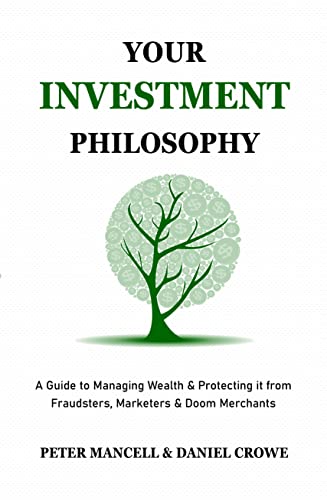A few years ago, ESG investing, also known as sustainable, ethical, or socially responsible investing, was all the rage. It was consistently touted in the media as the future. This meant investors were hot on it. Advisers would have clients, and prospective clients, asking what ESG offerings they had. It seemed many investors wanted to be green and ethical, feeling like they were making a difference with their money.
The heat could be seen in the money flowing into ESG funds. Morningstar data showed in 2021 that global money flowing into ESG funds hit a peak of $185 billion USD in Q1. Each subsequent quarter for 2021 saw flows above $140 billion. These numbers were almost triple the money flows seen only a year earlier.
Back then there were a couple of ideas that accompanied the interest in ESG investing. These ideas weren’t exactly assessed with a rigorous eye. Quite often they were coming from the marketing or public relations side of things. These ideas were swallowed by a mostly uncritical media and pumped back out to the public as facts.
It feels good, but…
The first was the idea that an investor could achieve better returns by taking less risk because there would be less risk attached to ethical and environmentally conscious firms.
This contradicts a fundamental rule of investing that every investor should keep at the front of mind. Risk is related to return. No one should expect a higher return when taking less risk. Believing otherwise is why many investors are caught by scams and bad investments. They are sold the lie that better returns are possible with less risk. Of course it’s not true. This isn’t to say ESG is a scam, it’s just that you shouldn’t expect a higher return because you’ve invested in an ESG focused fund.
The second was that an investor could make a difference with their money because it was being directed towards companies making socially and environmentally conscious choices. Further, a person could feel better about themselves for investing in those better companies.
There was a documentary made back in 2003 called The Corporation. It made the case that companies were self interested entities, solely focused on profit as their motive, going so far as to label them as psychopaths! A follow-up was made in 2020 and it highlighted that companies being portrayed as psychopaths in the first film had an impact. It’s not good PR to be known as a psycho! But how would a psycho respond? Truly change or just try and make themselves look better? There’s a theory the film may have contributed to the ESG concept with many companies making a “socially responsible” pivot to wash away perceived sins.
It does raise the question of how genuine ESG investing is, but if we take companies at face value, it might feel good, but there’s the issue of how much change does allocating to ethical firms bring? How much environmental change can an office-based business like a software company bring if it already ranks highly in sustainability metrics? Research suggests it might be more effective to invest in browner firms who have started to make changes to their business practices because it encourages further action.
The Slowdown
But back to that money flowing into ESG funds. Since the heady days of 2021, the money flowing into ESG funds globally has continued to slow. While it was $185 billion globally in new money flowing into ESG funds in Q1 2021, that figure had fallen to just $900 million in Q1 2024.
There is a divergence here that’s surprising. Despite accounting for around 60% of the world’s stockmarkets and 39% of the world’s bond markets, the US only accounts for 11% of the world’s ESG assets. The leader is Europe with 84% of the world’s ESG assets. To note, Australia and NZ account for 1% of ESG assets.
Despite the hype and forecasts of potential growth, ESG investing has never taken off in the US like it did in Europe. Now it is consistently going backwards. According to Morningstar US money flowing into ESG funds saw its sixth consecutive quarter of outflows in Q1 2024, seeing $8.8 billion in funds being withdrawn.
Morningstar noted regarding the outflows “Although the motivations behind outflows cannot be perfectly quantified, many factors are in play. These include high interest rates, middling returns in 2023, greenwashing concerns, and the continued politicization of ESG investing.”
Politics & ESG
The last one might be the biggest issue ESG investing has. The ESG acronym has become political and now part of the culture wars in the US. Several major companies like Disney, Target and Anheuser-Busch have found themselves in hot water with consumers over various branding themes perceived to be ESG related. This has resulted in boycotts, which have hurt bottom lines, and reminded consumers they have power.
Aware of this, companies themselves are now starting to change their language. Many are removing ESG references from websites and reports. In 2019 ESG was barely mentioned by any S&P 500 companies during their quarterly earnings calls, but that quickly changed as the hype took off during 2021. According to the Wall Street Journal “in the fourth quarter of 2021, 155 companies in the S&P 500 mentioned ESG initiatives; by the second quarter of 2023, that had fallen to 61 mentions.”
It’s not just consumers with the backlash. While some governments are supportive, others are openly hostile. Forbes highlighted that “Attorney Generals of several U.S. states have sued financial companies that employ ESG. The U.S. House of Representatives Judiciary Committee has subpoenaed BlackRock and State Street Global Advisors to investigate whether they are colluding to promote ESG.”
It’s gone so far, that in Texas, companies looking to provide services to the state must now file a letter that they do not “boycott energy companies” or “discriminate against a firearm entity.”
This has left some of the bigger and better-known banking names doing less and less business in states like Texas. And that business has been collected by smaller financial institutions. Citibank did over $4 billion in Texas state and municipal debt issuance in 2020. In 2023 they did zero. In contrast Jefferies Financial Group, a company a less than a tenth the size of Citi, went from issuing half a billion in Texas debt, to over $4 billion in 2023. Interestingly, Jefferies still have commitments to ESG, but they’re more circumspect about it so they can still win business.
What to make of it as an investor?
Fads come and go. It might be too early to tell whether ESG is one of them, but it’s always best to just think about the known drivers of returns when investing. Everything else is a sideshow. That way we’re never caught up believing stories that aren’t as heartwarming as we first thought.
This represents general information only. Before making any financial or investment decisions, we recommend you consult a financial planner to take into account your personal investment objectives, financial situation and individual needs.




